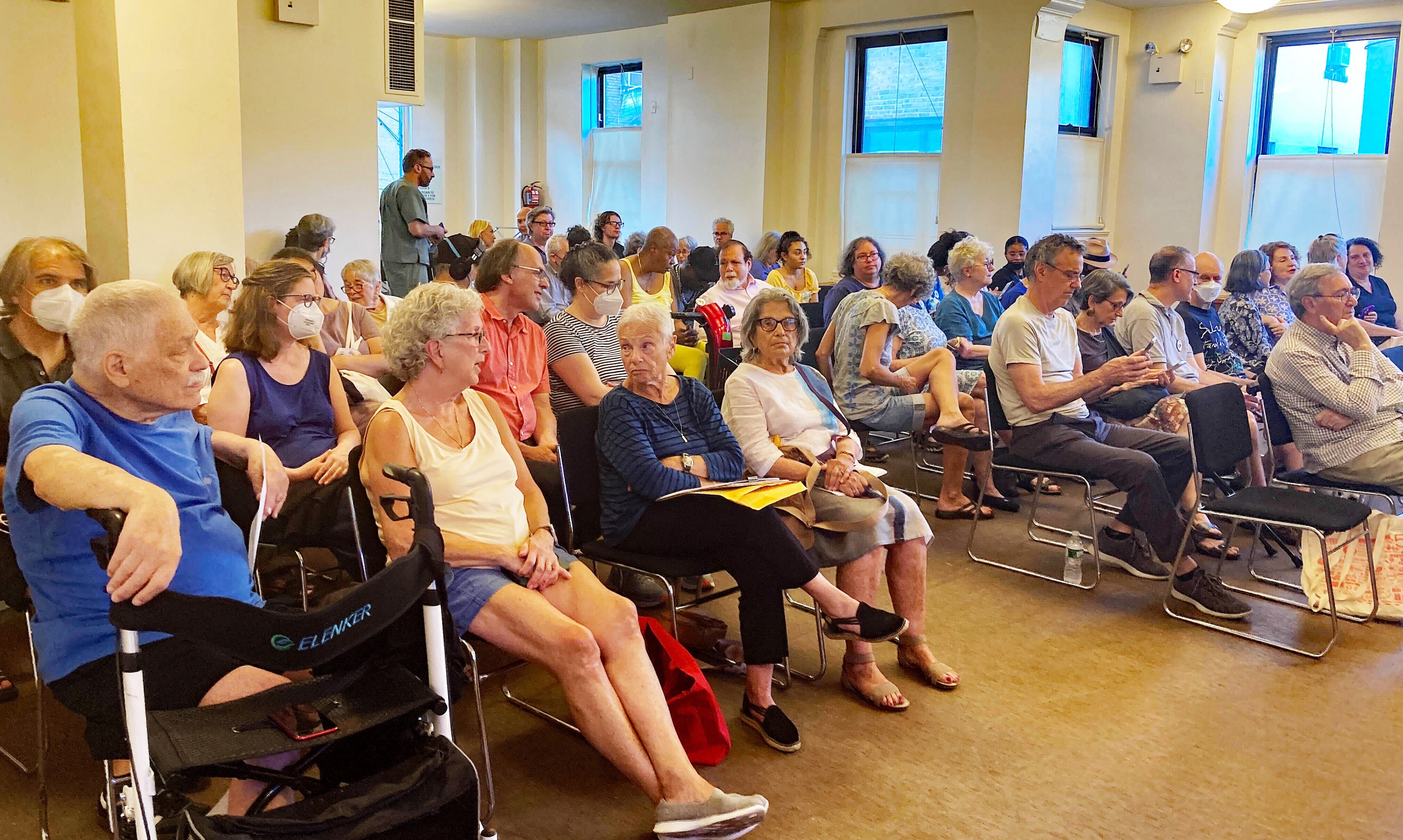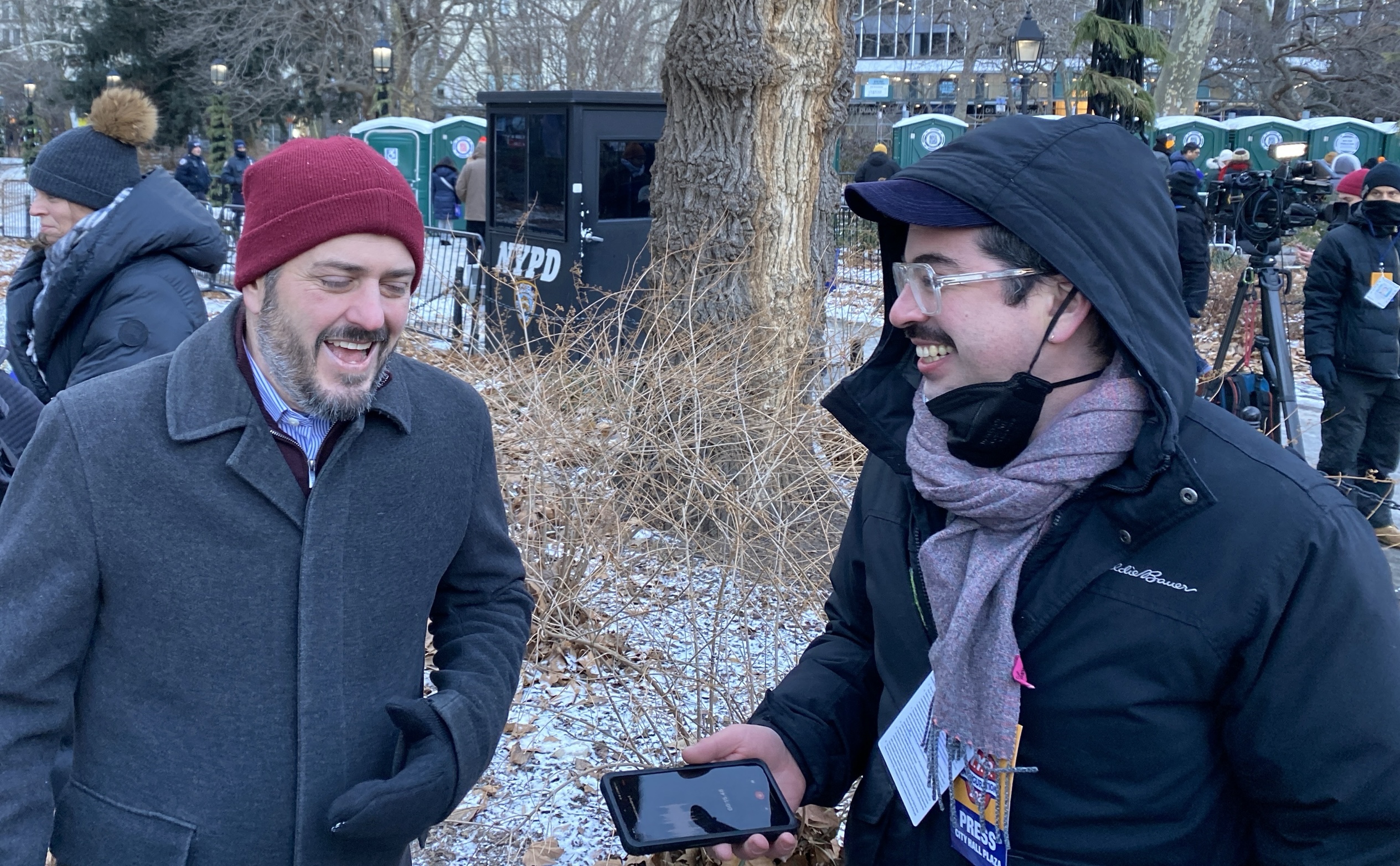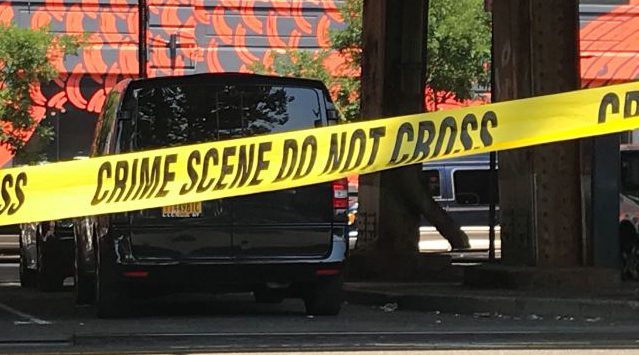Ayanna Behin’s typical mediation work as the director of training and conflict consulting at the New York Peace Institute involves heavy and emotional issues such as police reform, school desegregation and human rights. She most recently worked through a “restorative process" at a high school in Brooklyn to help students and teachers recover after a shooting in their neighborhood. But last Thursday night, at a Conservative synagogue on the Upper West Side, Behin found herself in the middle of a surprisingly volatile discussion: Whether W. 103rd Street should remain a haven for pedestrians and slightly less convenient for drivers.
“We’ve got labor disputes, we’ve got public housing disputes, we’ve got hate and bias, integration, police reform, never an open street,” Behin said before the start of the two-hour meeting inside Congregation Ansche Chesed, the W. 100th Street house of worship. "I think this rises to the level of a community in conflict that needs support … but I do think that it is a rare community that has asked us to come in to talk about this."
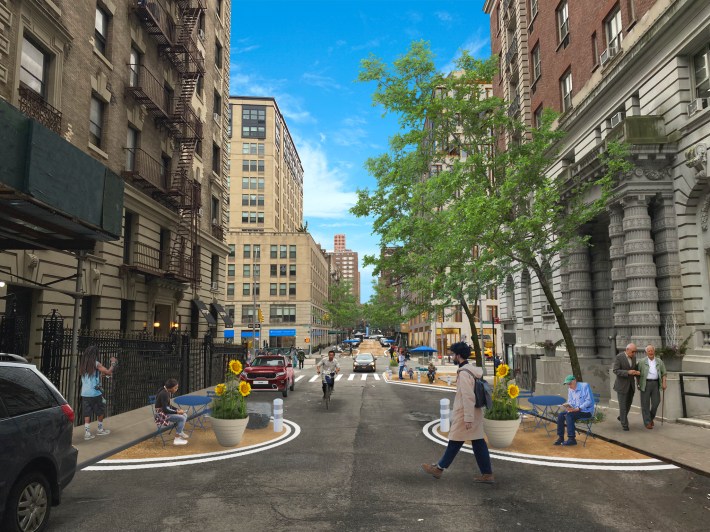
Behin was enlisted by Council Member Gale Brewer (D-Upper West Side) to amicably moderate what has become one of the most contentious and acrimonious debates in a neighborhood with a long history of contentious and acrimonious debates.
“I have lived 40 years in this neighborhood and I have never heard us talk to each other this way, and we have had far more serious, grave issues. Something is wrong,” a long-time resident who identified himself as Paul said during the meeting.
In 2020, born out of the Covid-19 pandemic and the city’s need for more open space, the Department of Transportation set aside two blocks of 103rd Street — between Broadway and Riverside Drive — as closed to cars as part of its new Open Streets program (it soon expanded to Amsterdam Avenue). Today, more than three years later, metal barriers are in place daily at the intersections to slow down traffic. Access is still permitted, so long as drivers travel no more than five miles per hour.
“Which they don't,” said Peter Frishauf, a founding member of ParktoPark103, whose vision it is to create a permanent open street along W. 103rd Street between Central and Riverside parks (the blocks between Amsterdam and Manhattan Avenue already comprise a car-free plaza in the heart of the NYCHA's Frederick Douglass Houses).
The open street has much support, which is apparent not only by the number of people strolling along on a sunny day, but also by Community Board 7's 38-1 vote last September in support of the DOT's proposed plans for planters, neckdowns, and what the transportation agency calls “hugs,” to calm traffic and improve pedestrian safety and user experience. The full board's near-unanimous vote followed the transportation committee's own stamp of approval months prior.
“I attended the (transportation committee) meeting ... and it was well attended and there was a nice mix of community residents that spoke in support of this proposal: Older people, you know, disabled people, young people...,” said Erana Stennett, a member of the board, during the virtual meeting in September.
At the time, several residents raised the usual concerns about traffic flow, but also voiced vague conspiracies about how the open street would enable “vagrancy” and people using the block for “unwanted purposes.”
"Between Amsterdam and Broadway can be a very nefarious block,” said Wayne Duvall during that same September meeting. "Under my window alone I've had a shootout — guns blazing between cars. So my understanding is you'll have benches in the middle of the street and people can gather. It's not a great place between Amsterdam and Broadway to open up to the nefarious folks, you know." (Duvall did not respond to follow-up questions from Streetsblog.)
His wife also chimed in.
“We need cabs to be able to go there, we need to be dropped off in front of our building,” she said.
A member of the board clarified that cars are not forbidden from the street.
“There still will be traffic on that street, it will just be more calm. It will just be slower. There'll be no impairment of the ability to deliver goods or to deliver people for that matter,” said Howard Yaruss.
Yet 10 months later, those same concerns persist. During Thursday night’s "peace meeting" in a stifling room in a synagogue whose name means “love and kindness” in Hebrew, opponents of the open street bemoaned the loss of parking (estimated by DOT to be a “net removal of 13 spaces”).
“I am an 83-year-old woman with a 75-pound dog. We cannot access the subway with a dog. Obviously our transportation needs are very limited,” said Maxine DeSeta, who recounted her conversation with DOT Commissioner Ydanis Rodriguez on WNYC’s Brian Lehrer Show last November. "When I talked to Ydanis Rodriguez … I said, you know, 'I need my parking. I'm a former public school teacher, as you may realize essential workers can no longer live here. We have a bad parking situation to begin with. Only the wealthy can live here anymore.'"
DeSeta also likened one of the groups advocating for the open street, Transportation Alternatives, to the National Rifle Association.
“TA is a multi-million-dollar not-for-profit lobbying organization. And you know what non-profit lobbyists could be? NRA is a not-for-profit, so, ya know, not-for-profit is a loosey-goosey term,” she said.
Before sitting back down, DeSeta shared her personal connection to road violence — and how she, in her grief, drew a different conclusion about safety than other victims typically draw.
“Why am I so angry? My 11-year-old-son was killed by a reckless driver on a I-95 and I almost died also, and I did not ask everybody in Connecticut to give up their cars,” she said.
Like DeSeta, Herb Alter, who lives at 103rd Street and West End Avenue, objected, as many opponents typically do, to the "process" by which decisions were made when he was otherwise engaged. During the pandemic, he said, he and his ill wife decamped to their East Hampton second home — and the first he had heard about the open street was at the local dog run upon his return to the city last year.
“During the pandemic, many of us were away, and I might remind you, didn’t want to touch a newsletter. So when I became aware of this, which was only last year, I discovered that there were aspects of this that people didn't like. In particular, losing parking spaces seems to be a big issue,” said Alter, whose wife Ann died from cancer in 2021. “I don't think that it's the only reason people are against it. I think one of the reasons is because they feel it’s being imposed on them.”
But some supporters of the open street say that’s exactly the reason why parking should not be the leading factor of the project.
“If you’re going to leave the city at this time, then maybe it’s OK that you don't have a say about what happened with how the city is run, and that we should reserve a parking space for you,” said Jody Sperling, a choreographer and dancer who has performed on W. 103rd Street. “[The opposition] is not a majority opinion; it's a few people who are expressing extremely entitled positions because they don't want to lose a few parking spaces.”
Fifteen-year-old Marie Valentin agreed. Likely the youngest person in the crowd, where the average age hovered around 70, Valentin urged those at the meeting who object to the open street to think more inclusively.
“I feel like everybody on the opposing side is mostly thinking as a car driver and the parking spaces. Don’t you want your grandkids to walk safely through the street? They're young, they're gonna run, they're gonna play,” said Valentin, a youth ambassador for ParkToPark103. The youth ambassadors get paid through grants via the Department of Transportation and the Regional Plan Association.
“Do you live here?” one woman shouted at Valentin as she spoke, cutting her off.
“I live around the area. ... I walk through 103rd every single day to get where I have to go,” said Valentin. “So many people are just looking at it from, ‘I'm moving my parking space.’ But there's so many other people that have to move around and don't have that opportunity.’’
Another unidentified member of the crowd defended Valentin, condemning the woman for her uncouth behavior towards a teen.
“Why so nasty? She's a young woman,” the man said.
For Russell Taylor, who lives in the Douglass Houses, the harsh divide is not surprising — generational, racial, class, and even car-ownership issues often plague the neighborhood. According to census data, 73 percent of households on the Upper West Side do not own a car.
“I think it's a tale of two cities. You can walk across the street and know that you are in a different area. People want to protect what they have, and what they have is something for them, but not for everyone,” said Taylor, who wears many hats as a Manhattan Democratic county committee member, tenant organizer, and canvasser for WE ACT for Environmental Justice. "The project is inclusive, it’s safe, it’s a great project and there are good components about the youth being involved."
Frishauf agrees that the project is incredibly important for the community, for both young and old. For the first time, he says, residents of the Marseille, a 134-unit senior residence at the corner of Broadway and 103rd Street, will have access to a “high-quality” parklet that will wrap around the block.
“There are three elements to the open street: safety, beauty, and inclusion. Intersections are going to be a lot safer, and cars, by design, are going to travel more slowly. We don't want speeding cars on our streets,” said Frishauf, referencing an article in Curbed from earlier this year in which the author dubs an area just blocks away the “Bermuda Triangle of pedestrian death.”
“We are here to make it better,” said Frishauf.
A 30-year resident of the Marseille, who was out on the open street in his electric scooter on Sunday, said he appreciates the camaraderie that's grown out of having more public space for community events, and that it would be a shame if that were lost to cars.
"I like it. They play music out here, it's cute. I'd take people over vehicles any day," said Leon, who declined to provide his last name.
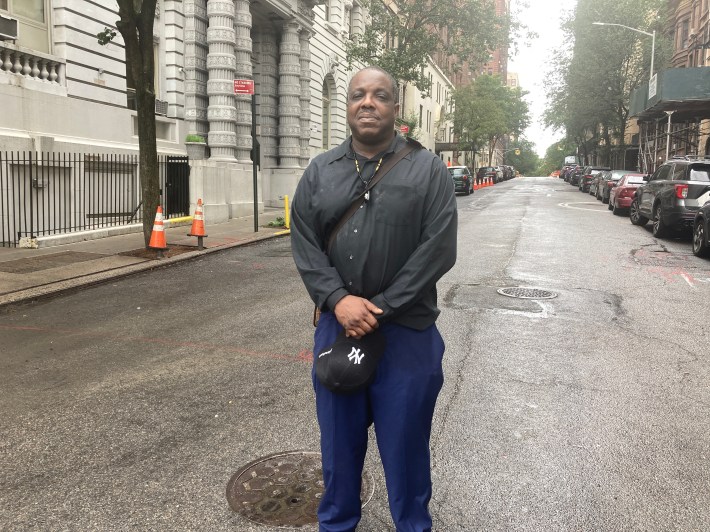
As the few-dozen attendees filed out of the room on Thursday night, it was clear that the mediation session did not work — acute tension and hostility were still palpable.
"I think people want more discussion. They're still not talking to each other on the block," Council Member Brewer said days after the meeting.
There is no peace on W. 103rd Street, or at least not yet. But Behin, the mediator, said she is happy to help them find it.
“They’re very passionate and upset. Our job as facilitators and mediators is to help people feel and be heard,” she said. “It’s bigger than, ‘Will there be an open street or not?’ It's about belonging and community and Covid, and what happened in the neighborhood during that time, and how do people come back to being together. We’re happy to help communities talk to each other again.”
It's unclear what will happen next, but DOT spokesman Vin Barone said his agency was moving forward, albeit perhaps with tweaks.
“We were pleased to join the community conversation last week and will take into account that feedback as we finalize our plans for this improvement,” he said.
